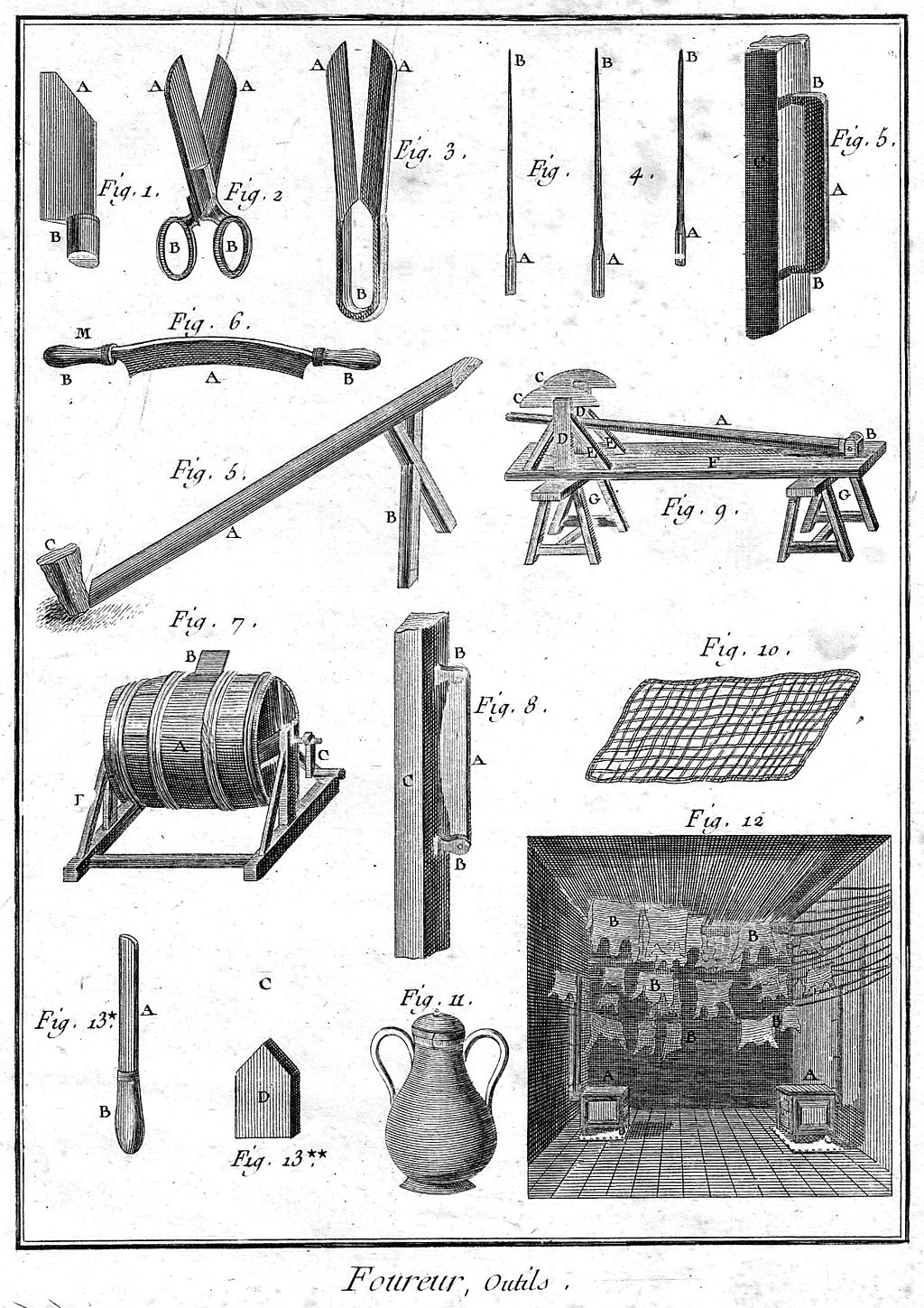Furrier
Cliquez ici pour la version française
Le Pelletier / Fourreur / Pélissier | The Furrier
The pelletier, or furrier, was a craftsman who bought and prepared various animal skins, for leather or fur. The pelletier could also be called a fourreur or pélissier.
The tools of a furrier ("Foureur, outils", drawing (artist unknown) appearing in the Encyclopédie, ou dictionaire raisonne des sciences, des arts et des métiers, Wikimedia Commons).
In 16th century France, there was a distinction between the occupations of pelletier and fourreur. The pelletier traded skins from all animal sources, while the fourreur would sew, double, and border the fur to a piece of clothing. In New France, the occupation was generally one and the same.
The manufacturing process depended on the type of skin the furrier was working with, but the main steps followed the same pattern.
Dressage: the skin was made wet and stretched to assess its size. The furrier could then determine the number of skins needed to make a garment, for example. Repairs were then made if necessary.
Sorting: the furrier sorted the skins by colour or shade, in order to ensure the homogeneity of the end product.
Nailing: the skin was wet once again and stretched to its maximum. It was then hung up with nails and staples and left to dry. It would become somewhat rigid, allowing the furrier to give it a specific shape.
Cutting & sewing: there were two possible cuts:
Working with the full skin: the skins were assembled and sewn end-to-end to make the surface of the garment. The joints were cut based a template.
Elongation: the skins were cut into V-shaped slats. The Vs were then sewn together in a staggered pattern.
Most furriers manufactured clothing, bedspreads and bed covers. Specialized furriers included the pelletier-bottier (furrier-bootmaker) and the fourreur de chapeaux (furrier-hatmaker). The furrier could then sell his wares to a furrier-merchant.
The common occupational surnames Pelletier, Pélissier and Peltier still exist in Canada today.
1695 French satirical engraving of a furrier and his clothing ("Habit de foureur", 1695 engraving attributed to Nicolas II de Larmessin, Wikimedia Commons).
Known persons who had this occupation: Guillaume Dupont dit Leblond, Pierre Dutour, Étienne Godeau, Joseph Wexler
Sources:
Alfred Franklin, Dictionnaire historique des arts, métiers et professions exercés dans Paris depuis le treizième siècle (Paris, H. Welter, 1906), 341-343.
“Georges BOUTIS, fourreur”, Inventory-type card of the intangible cultural heritage of France, 2010, Ministère de la Culture, http://www.culture.gouv.fr/Media/Thematiques/Patrimoine-culturel-immateriel/Files/Fiches-inventaire-du-PCI/Fourreur-Georges-Boutis.

